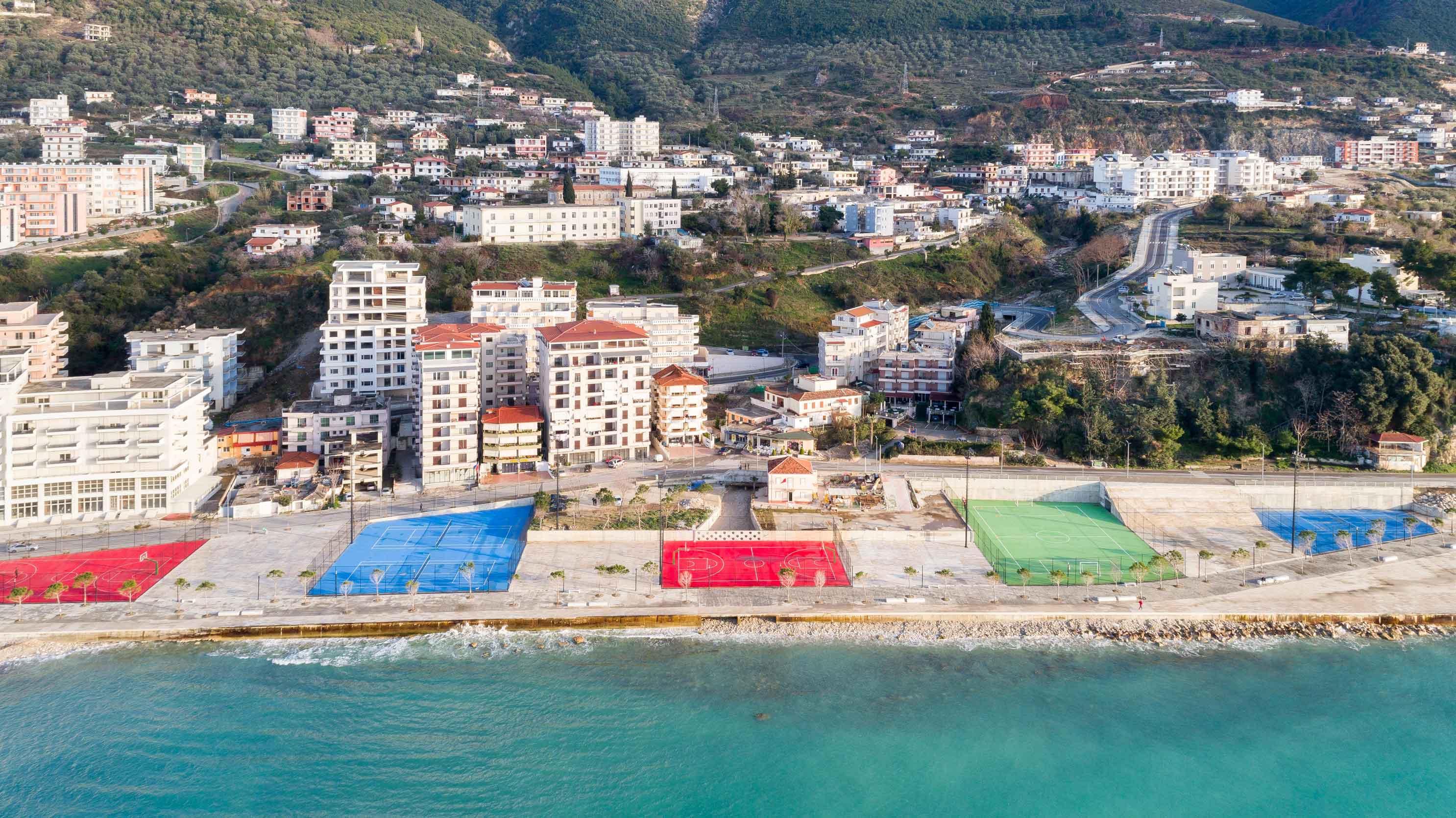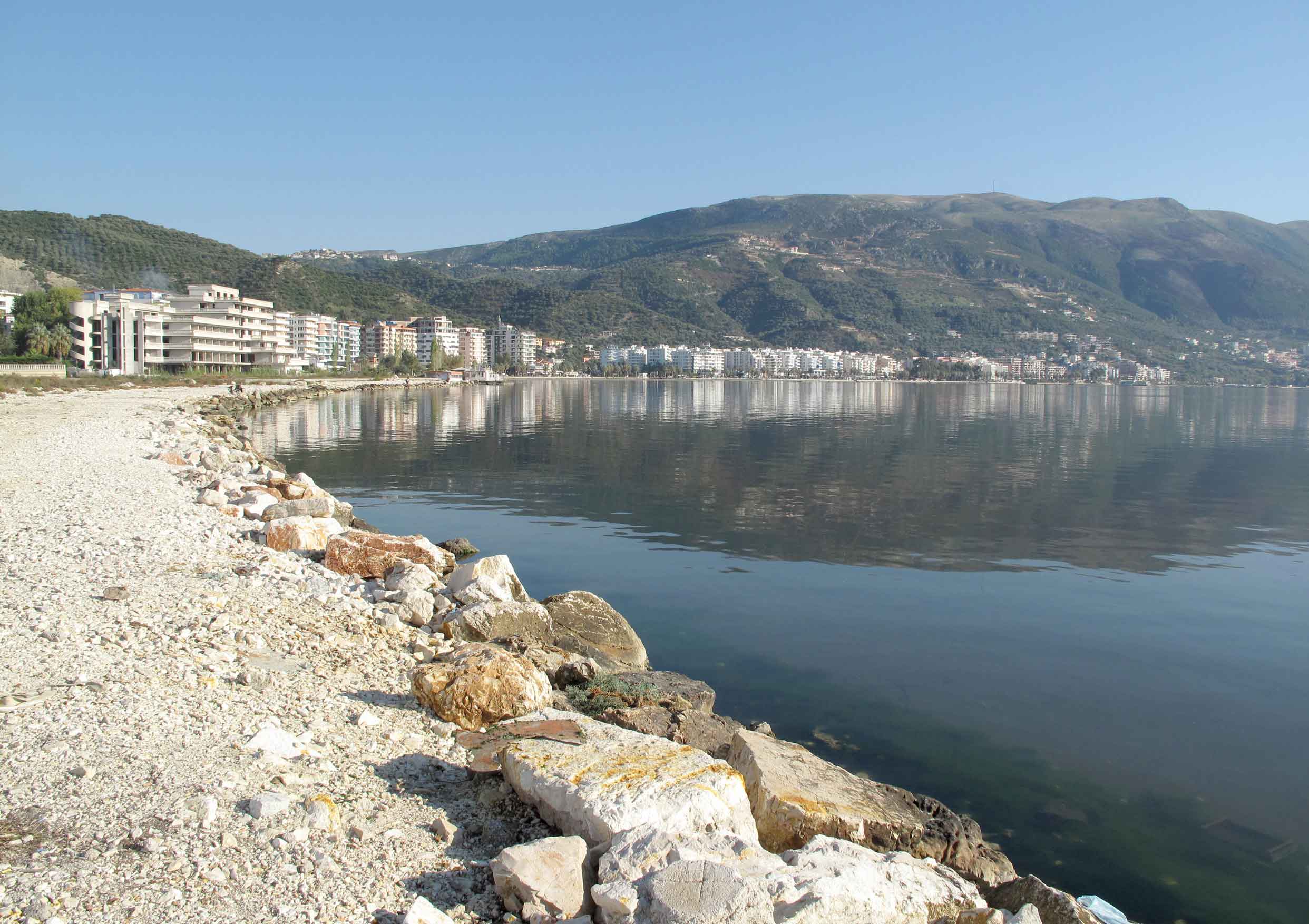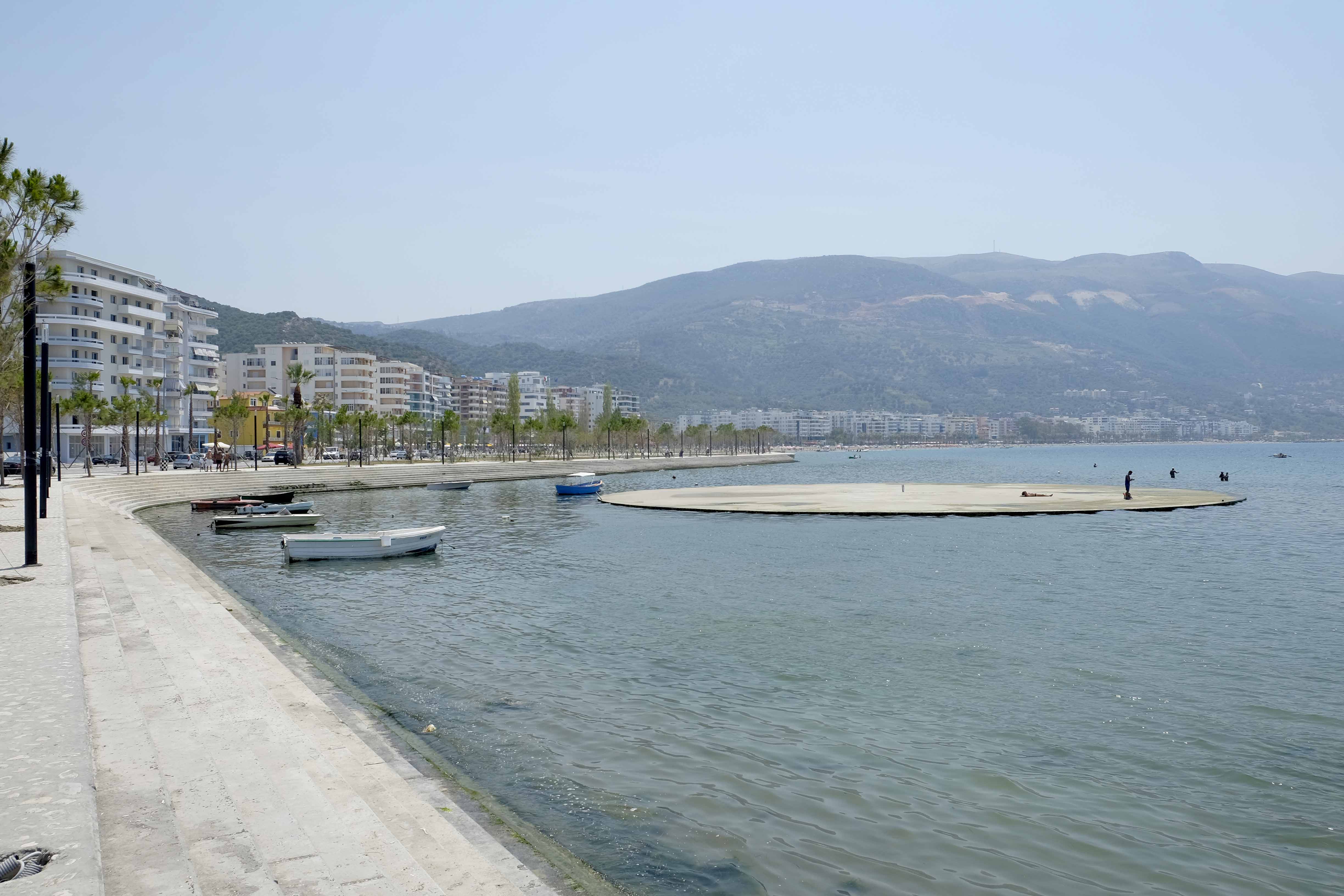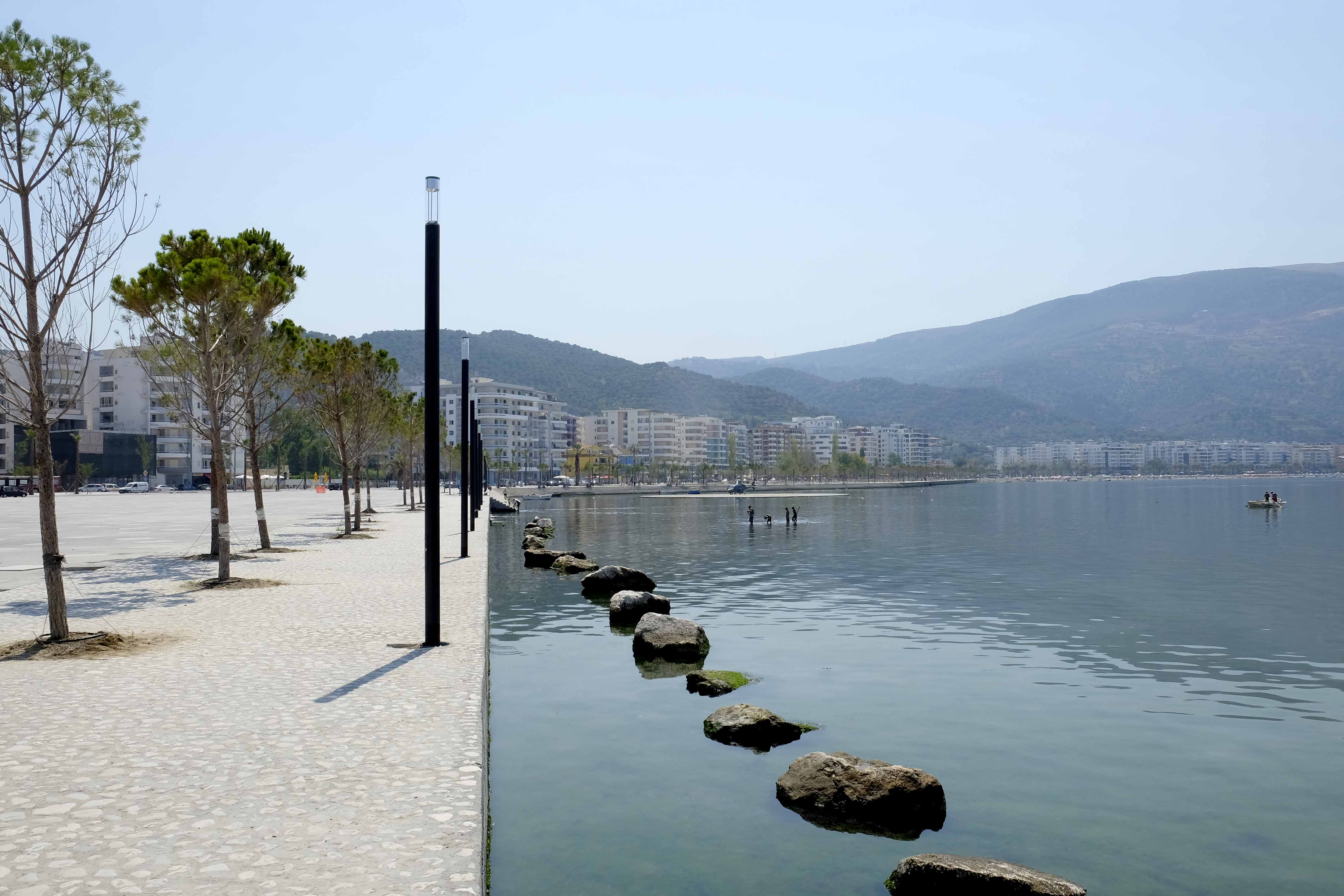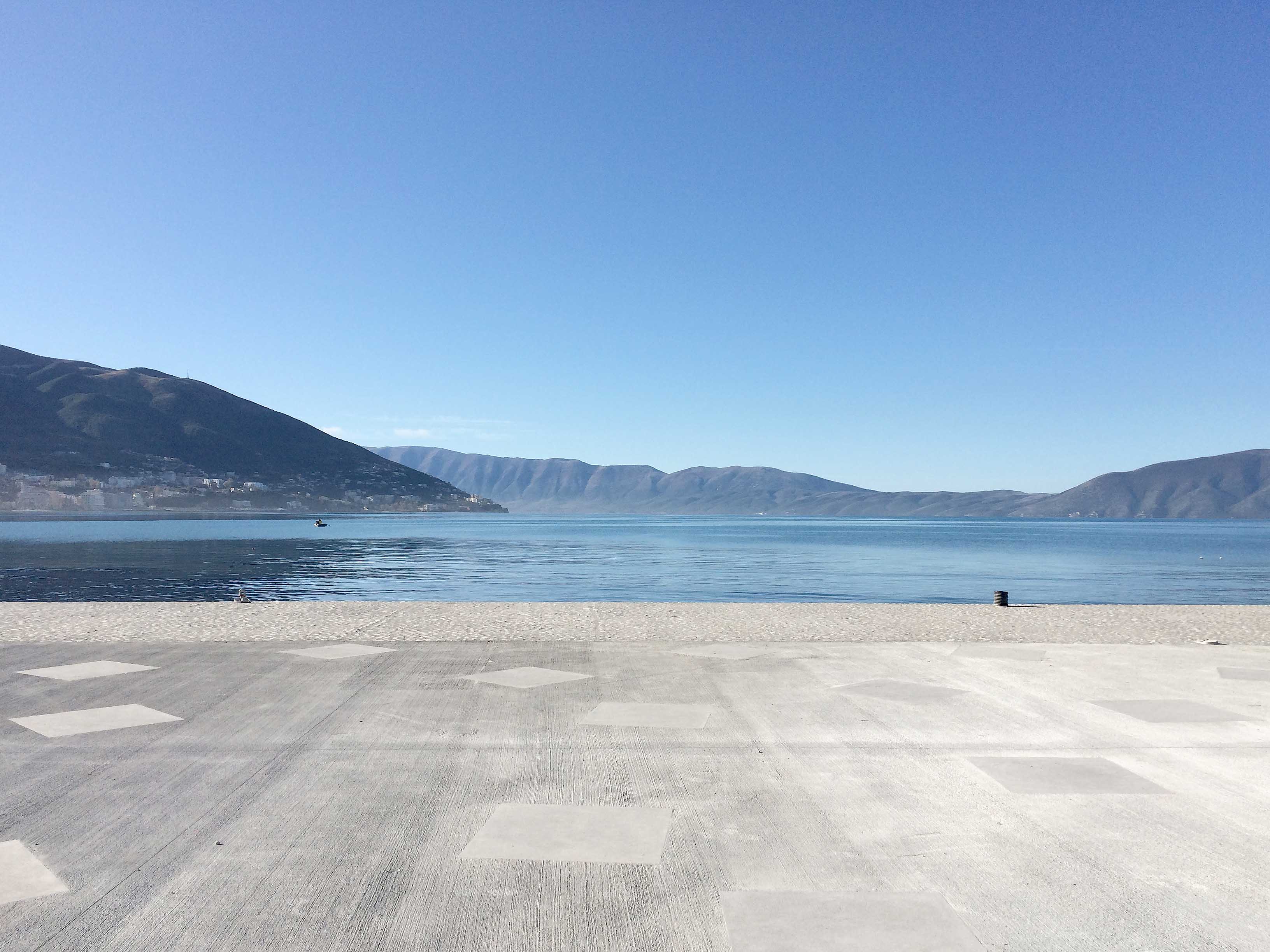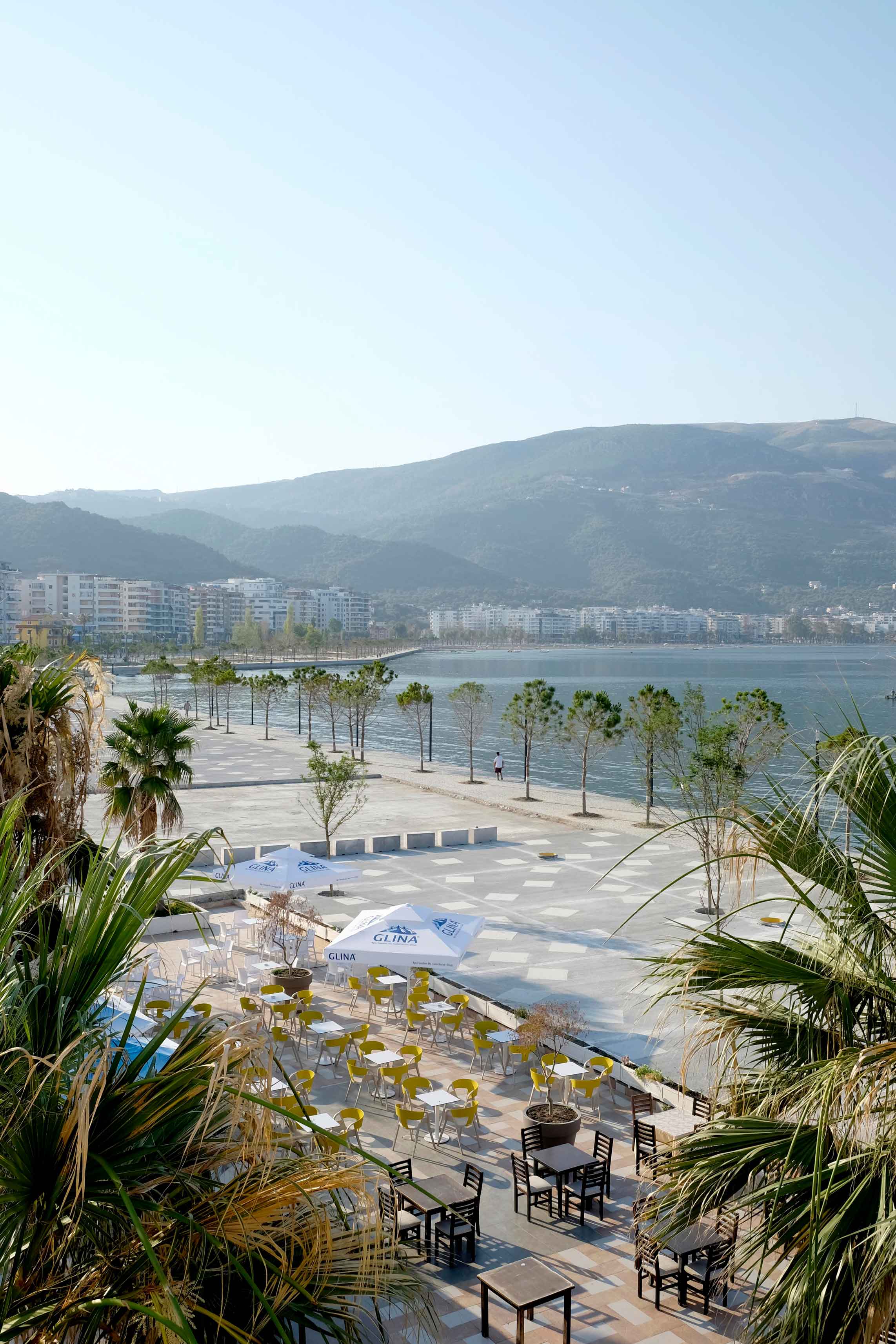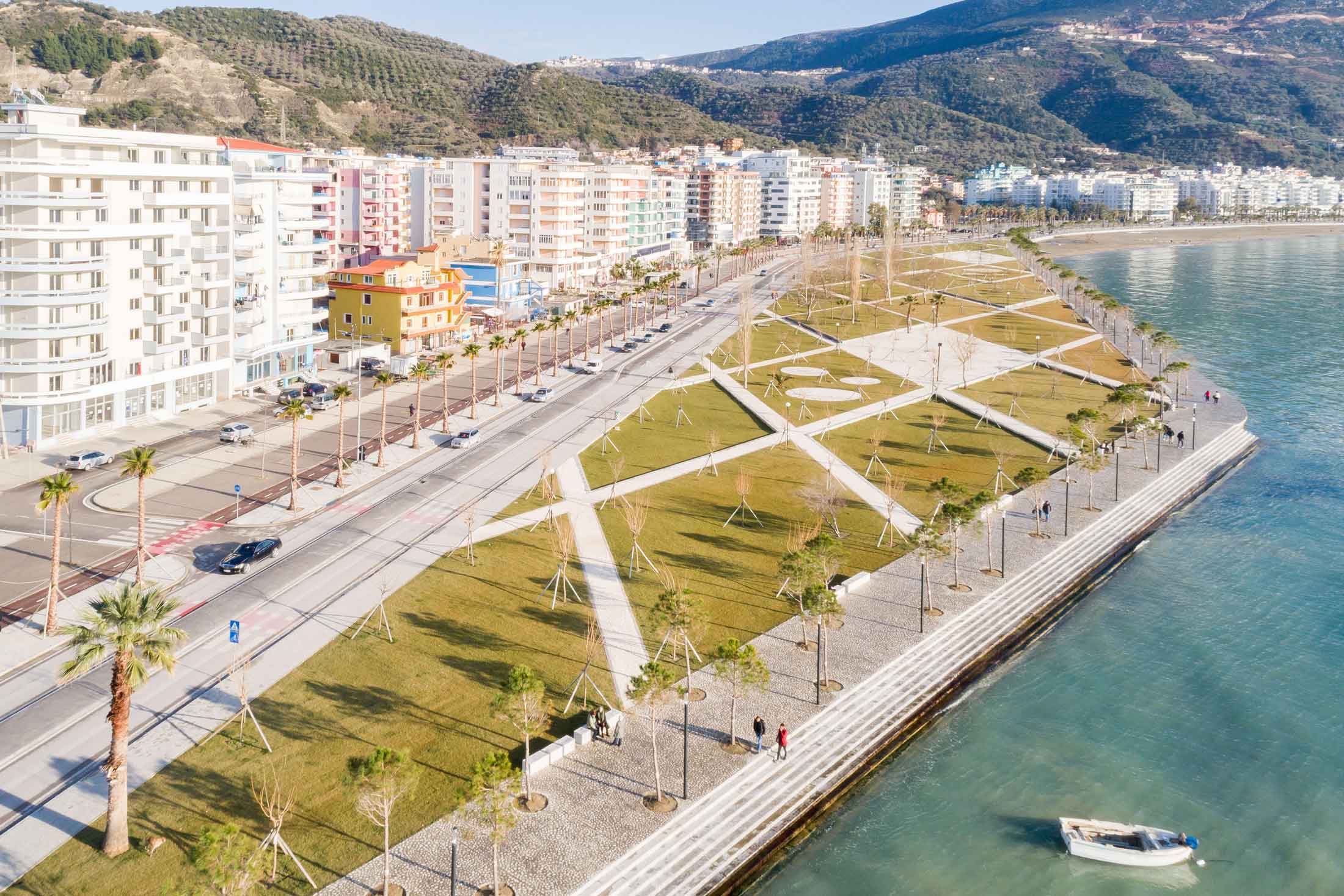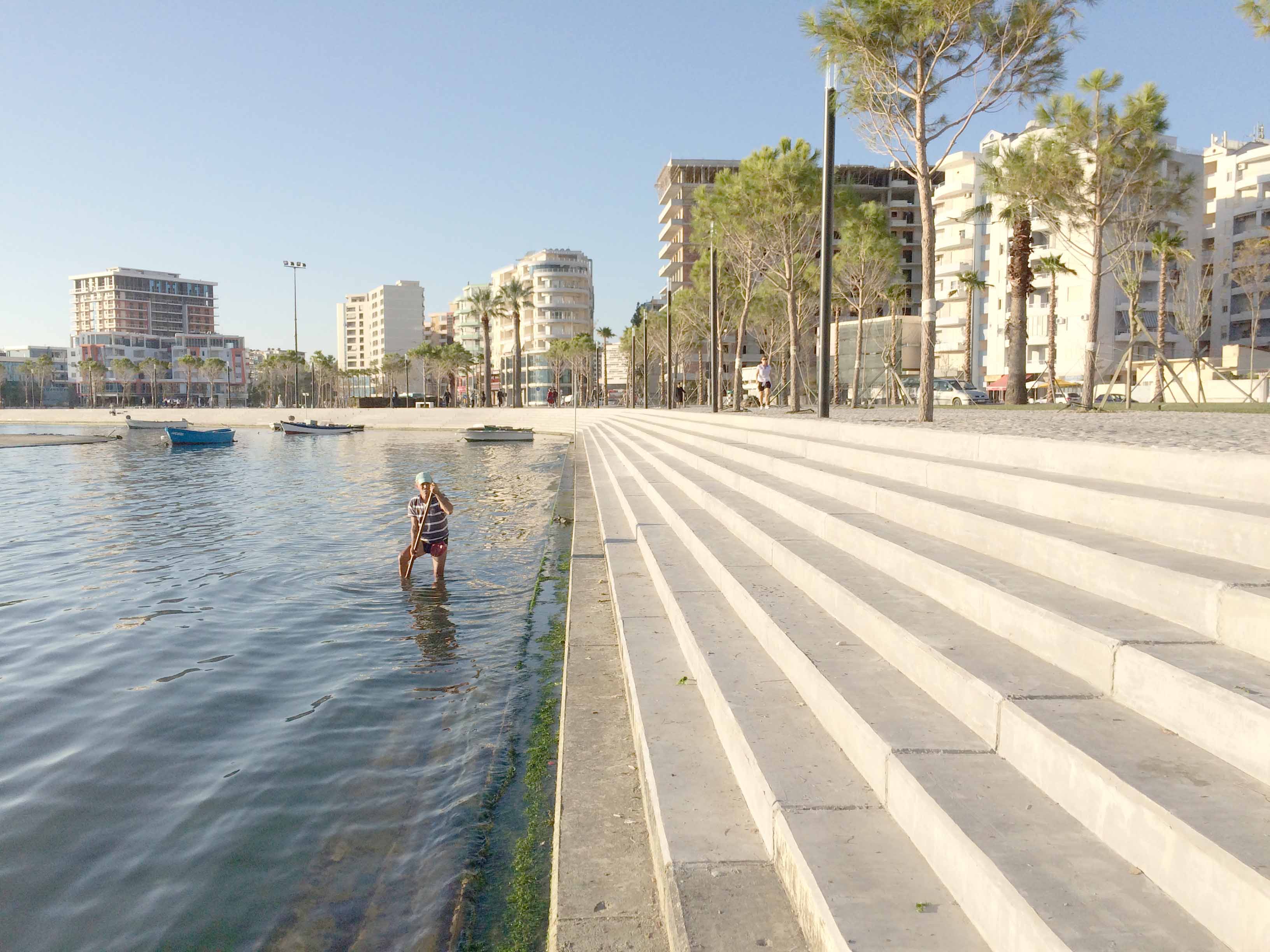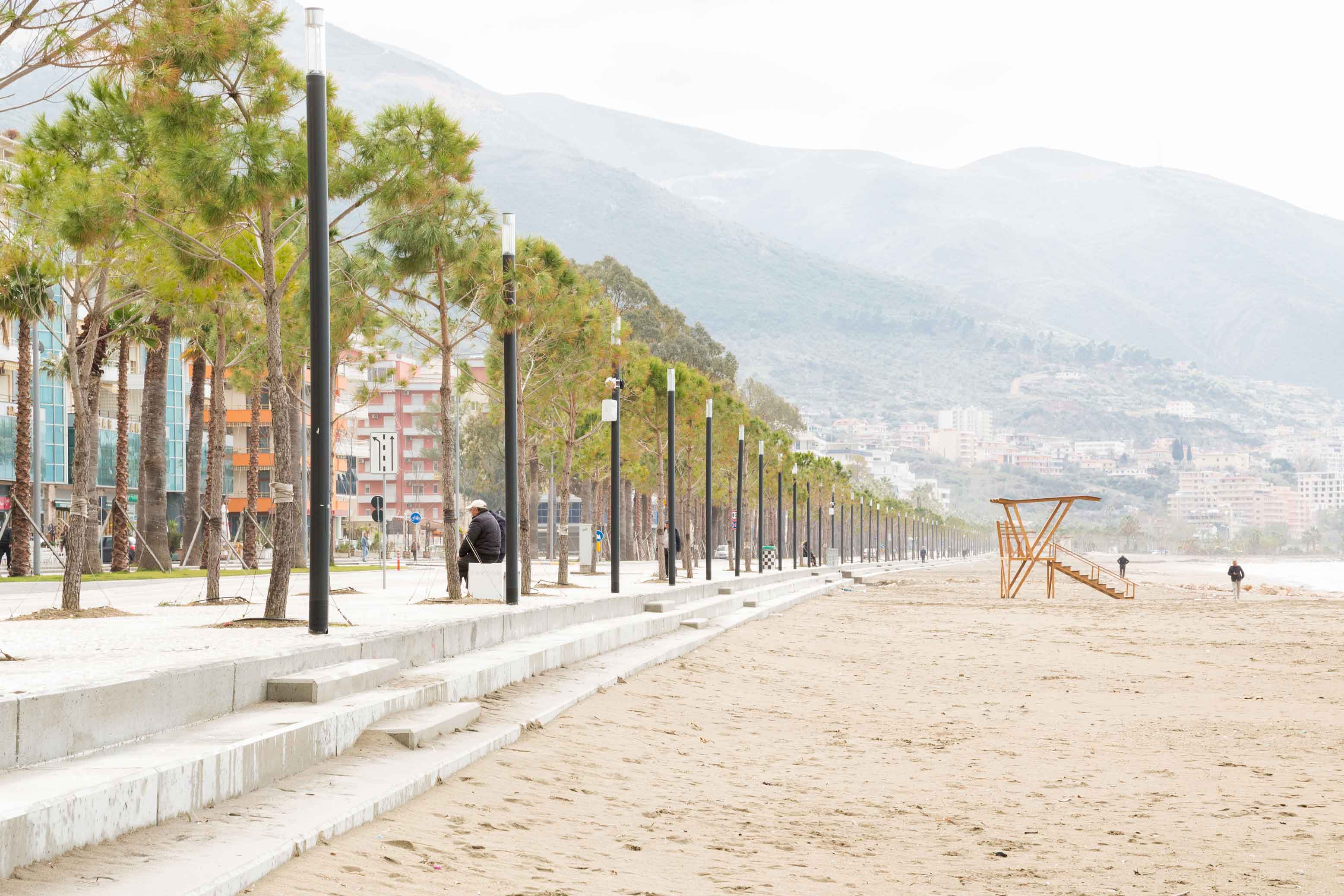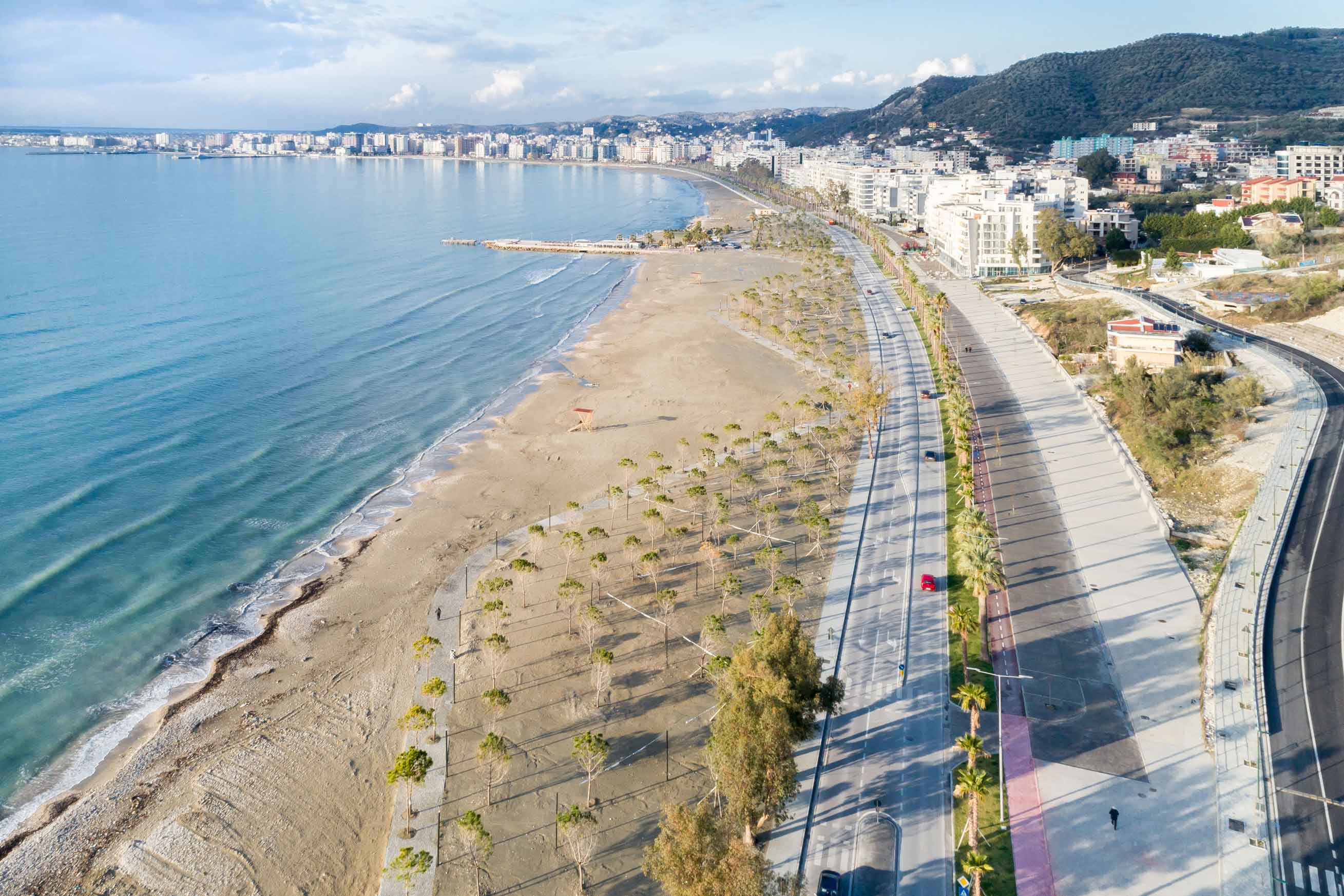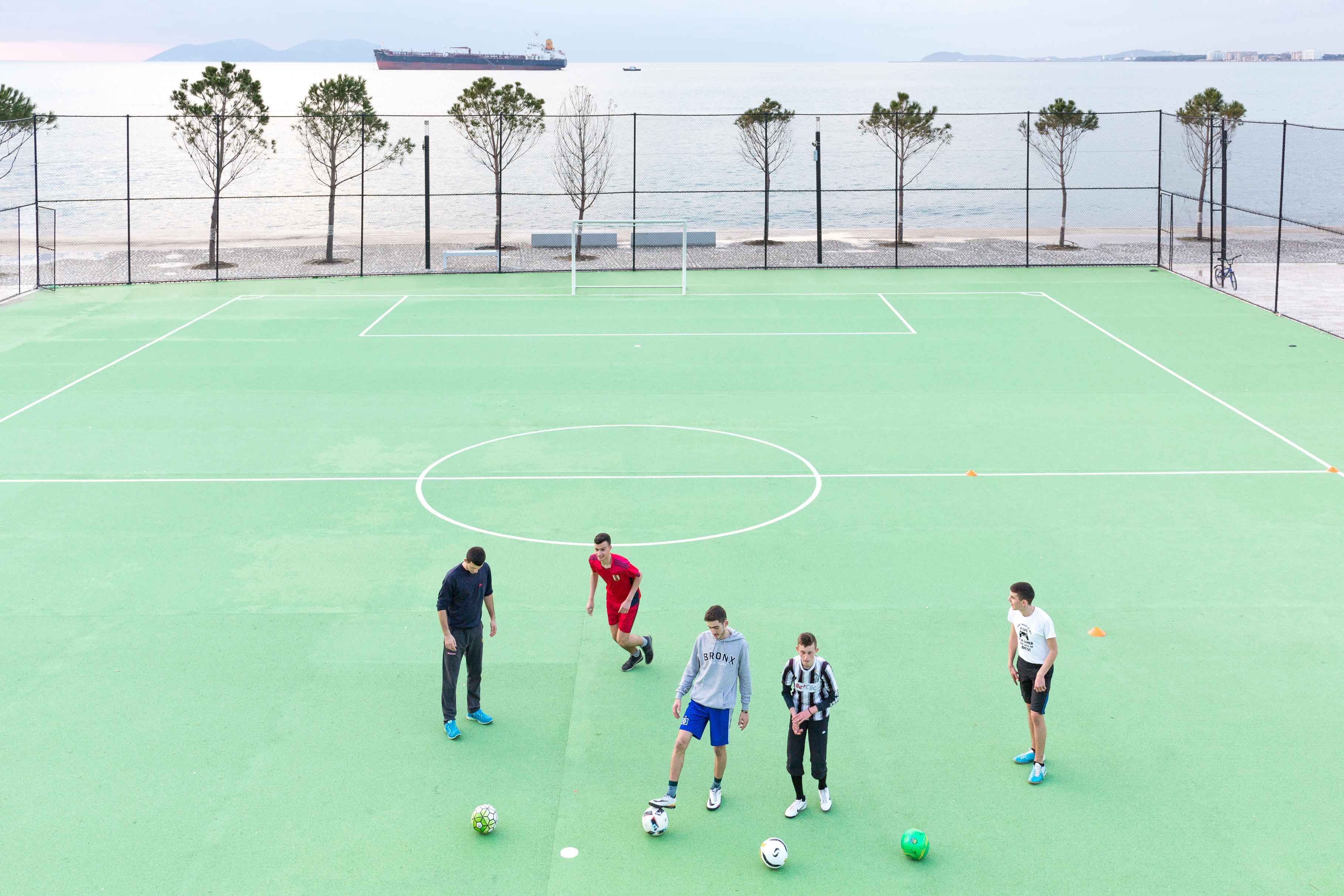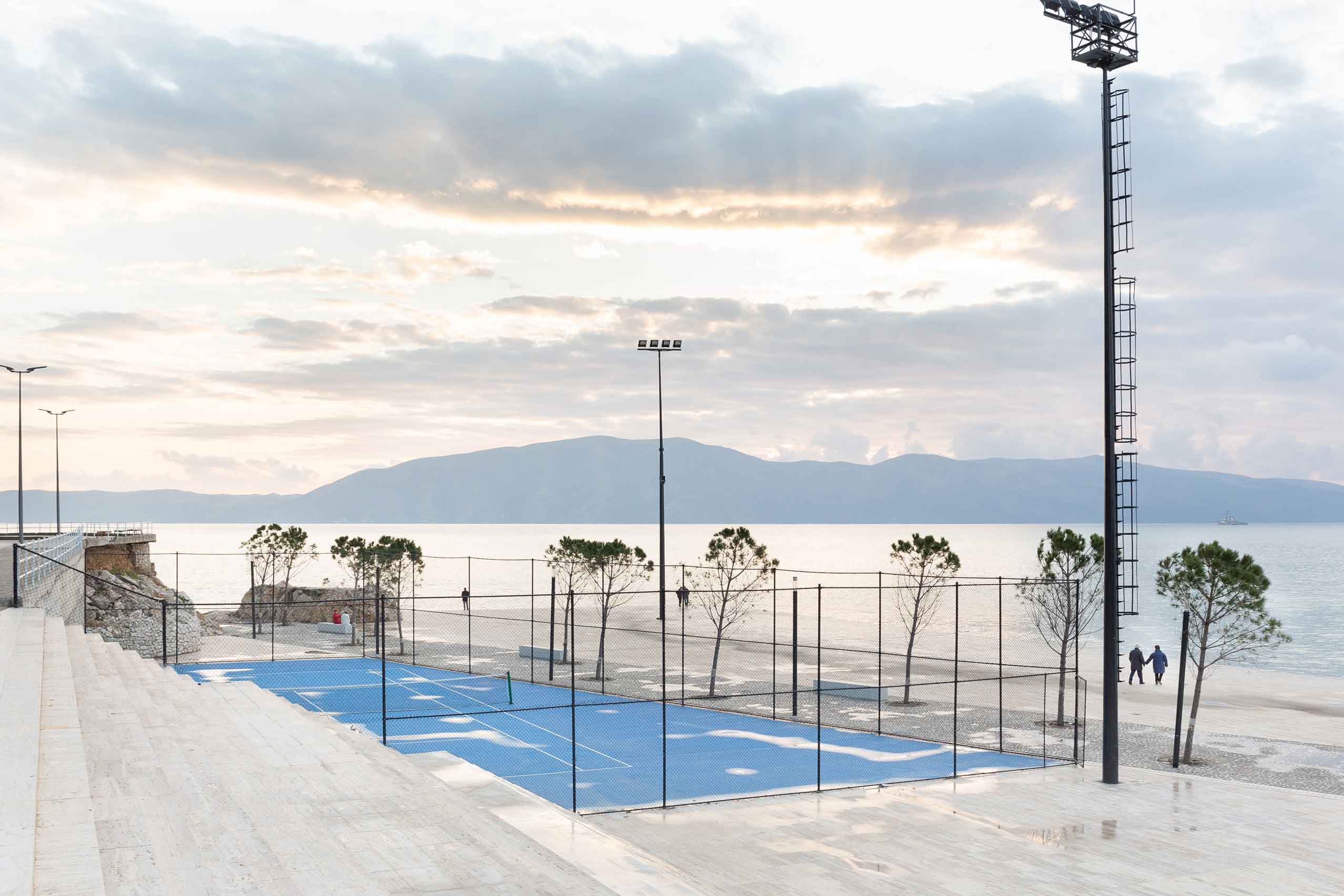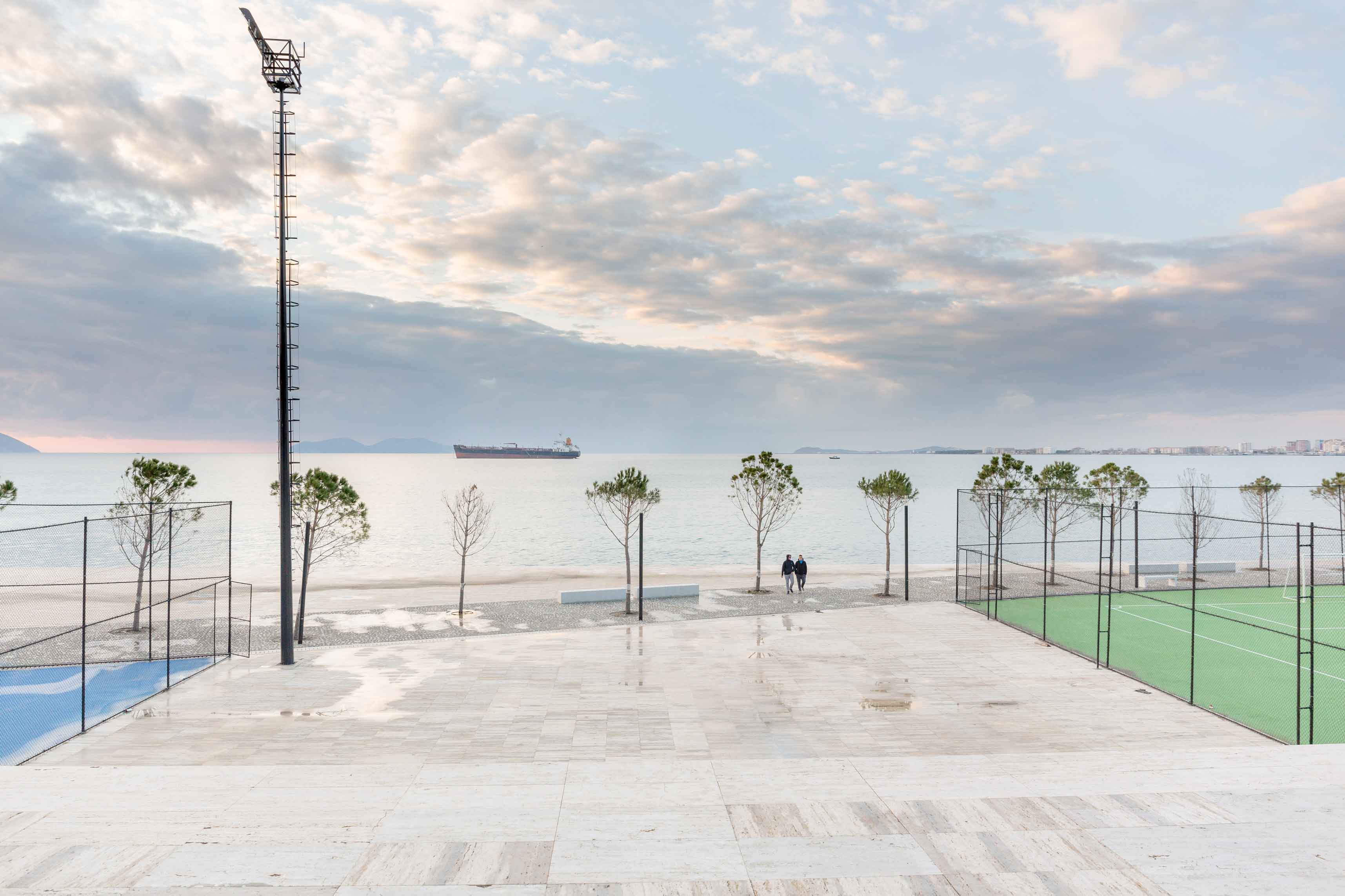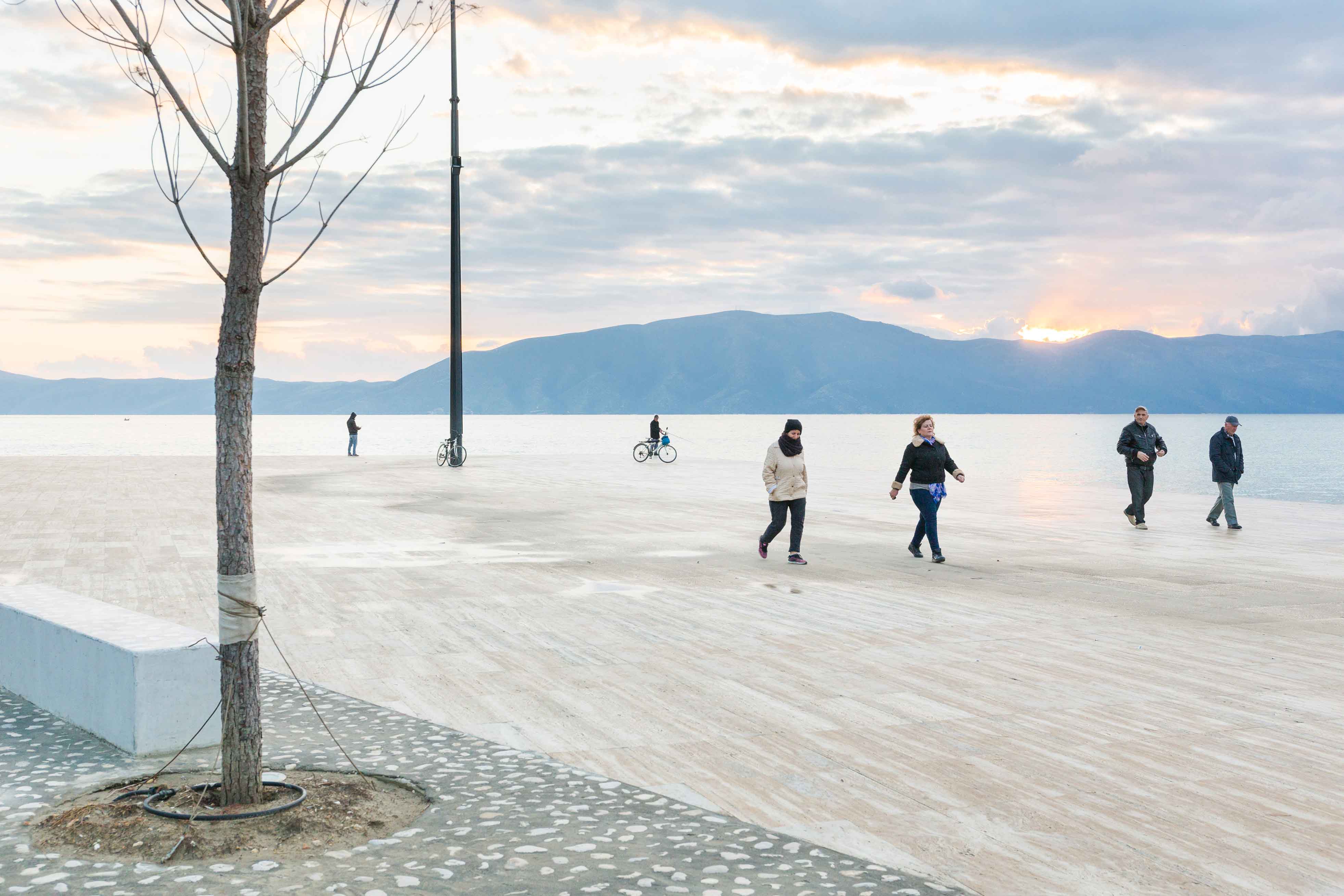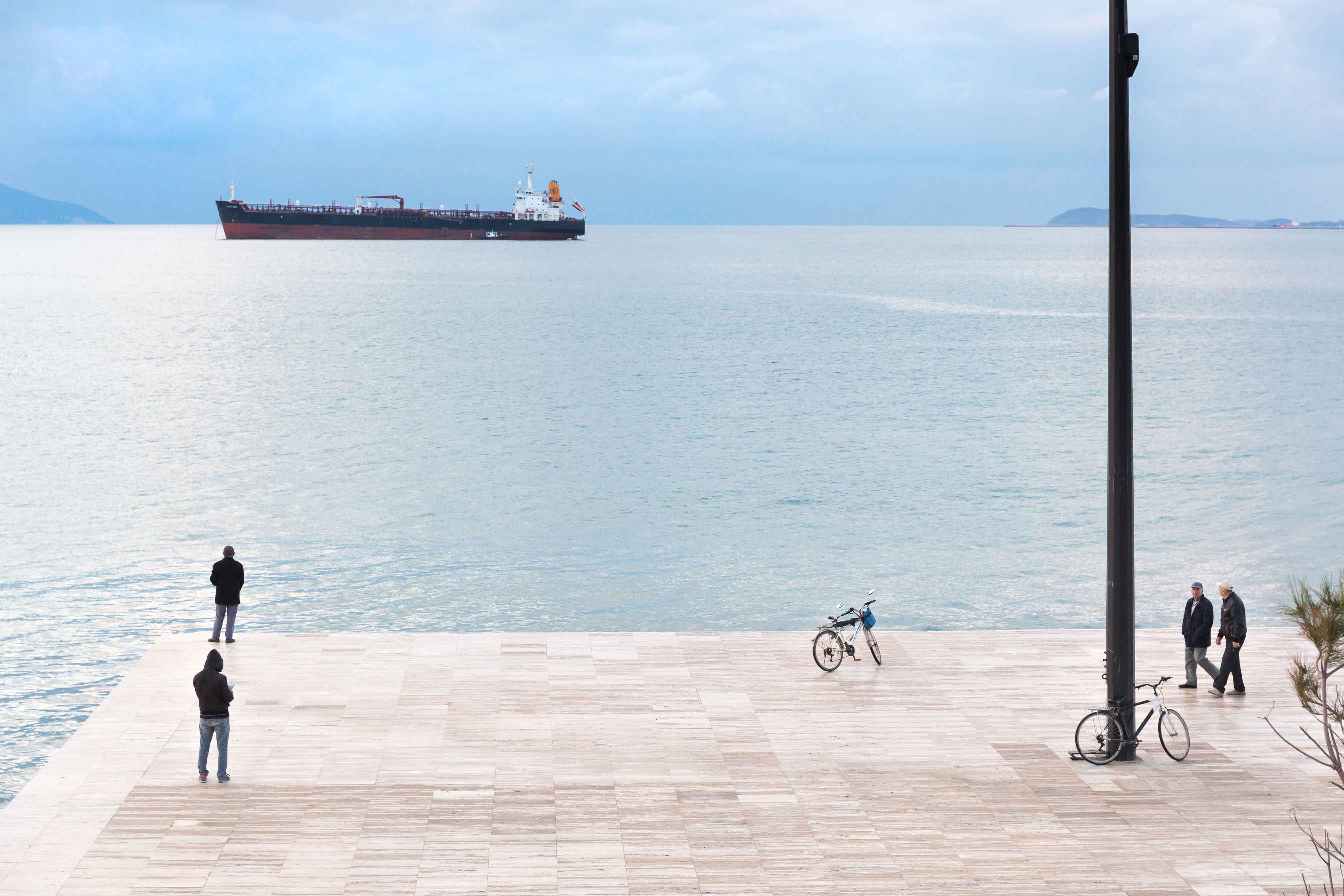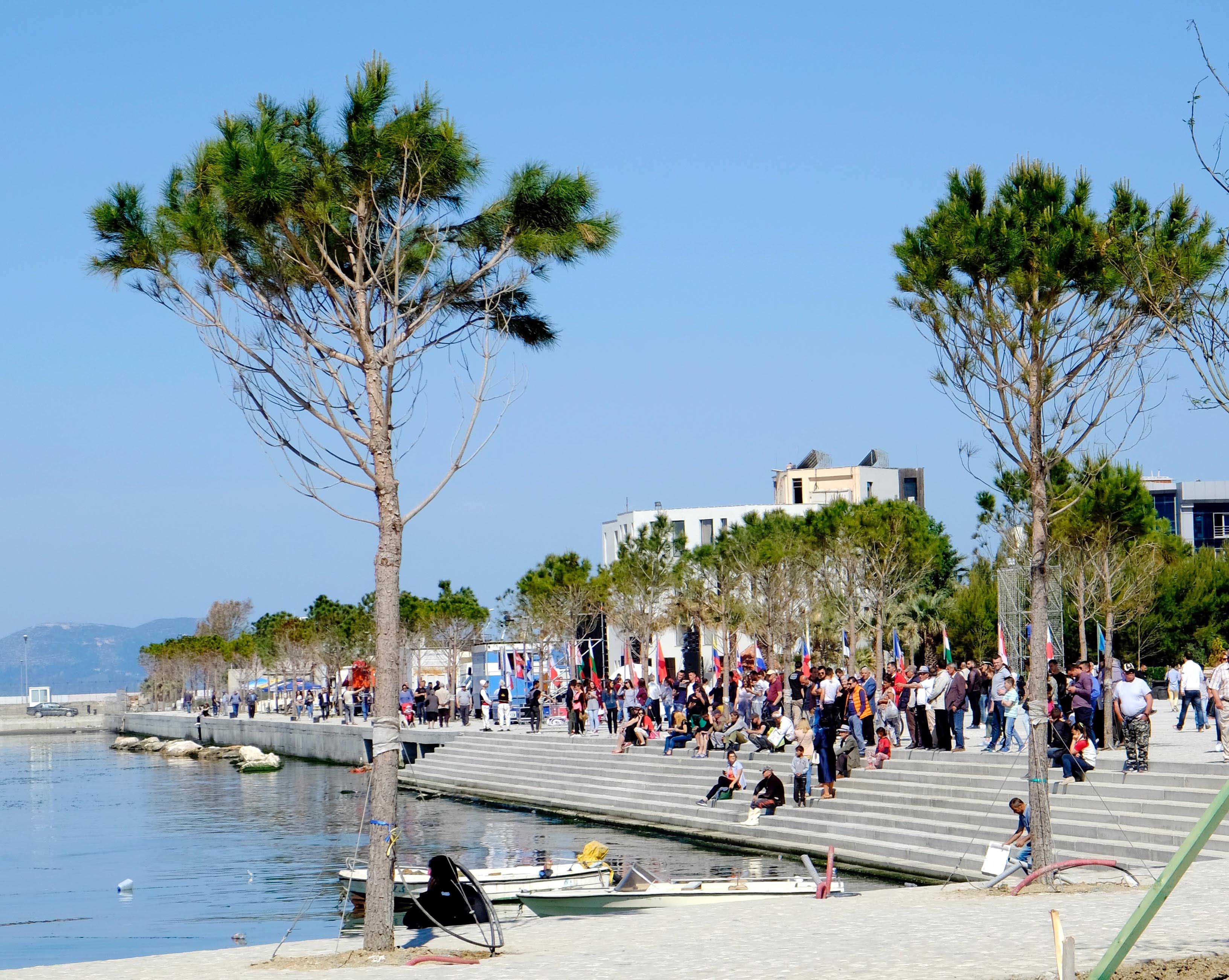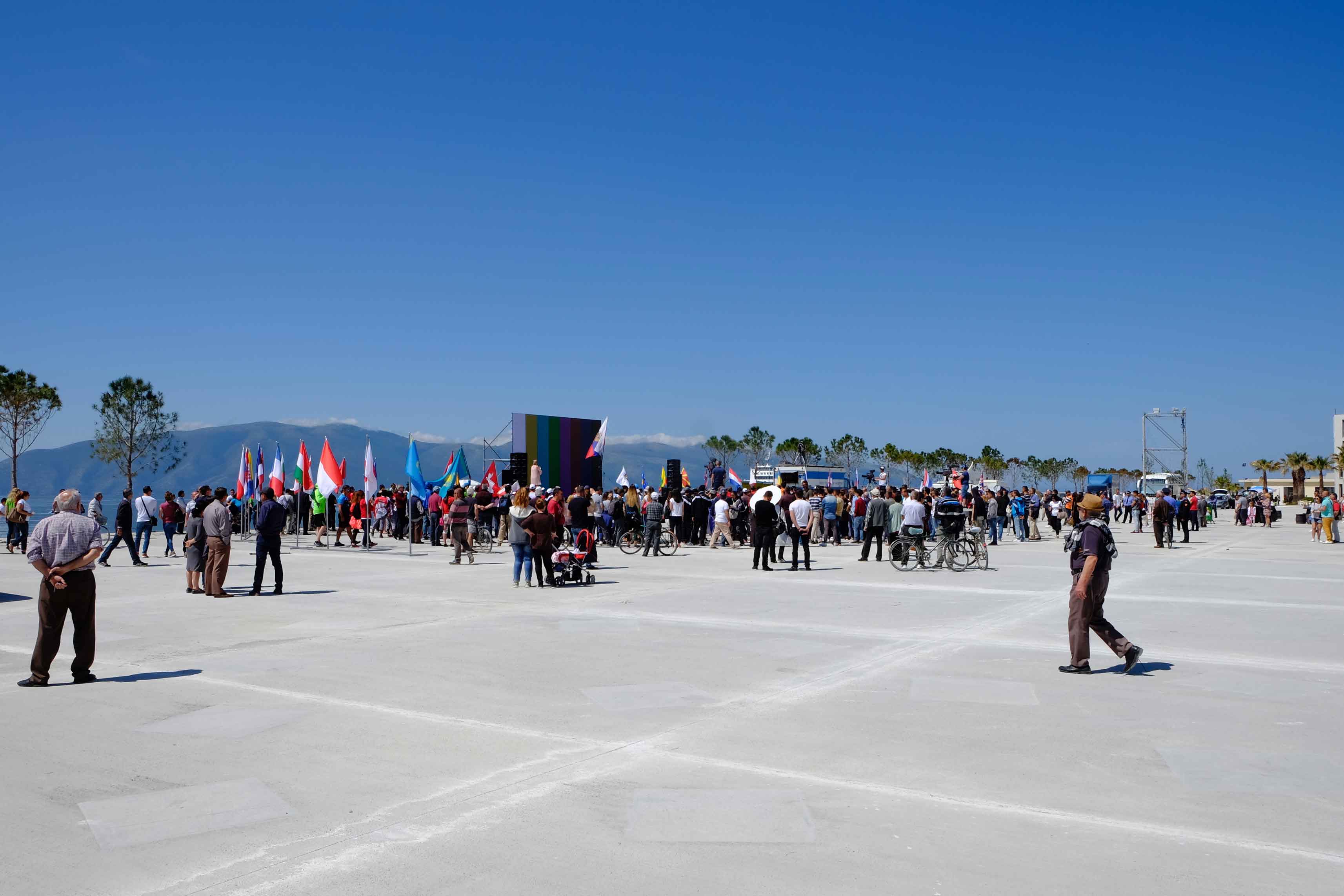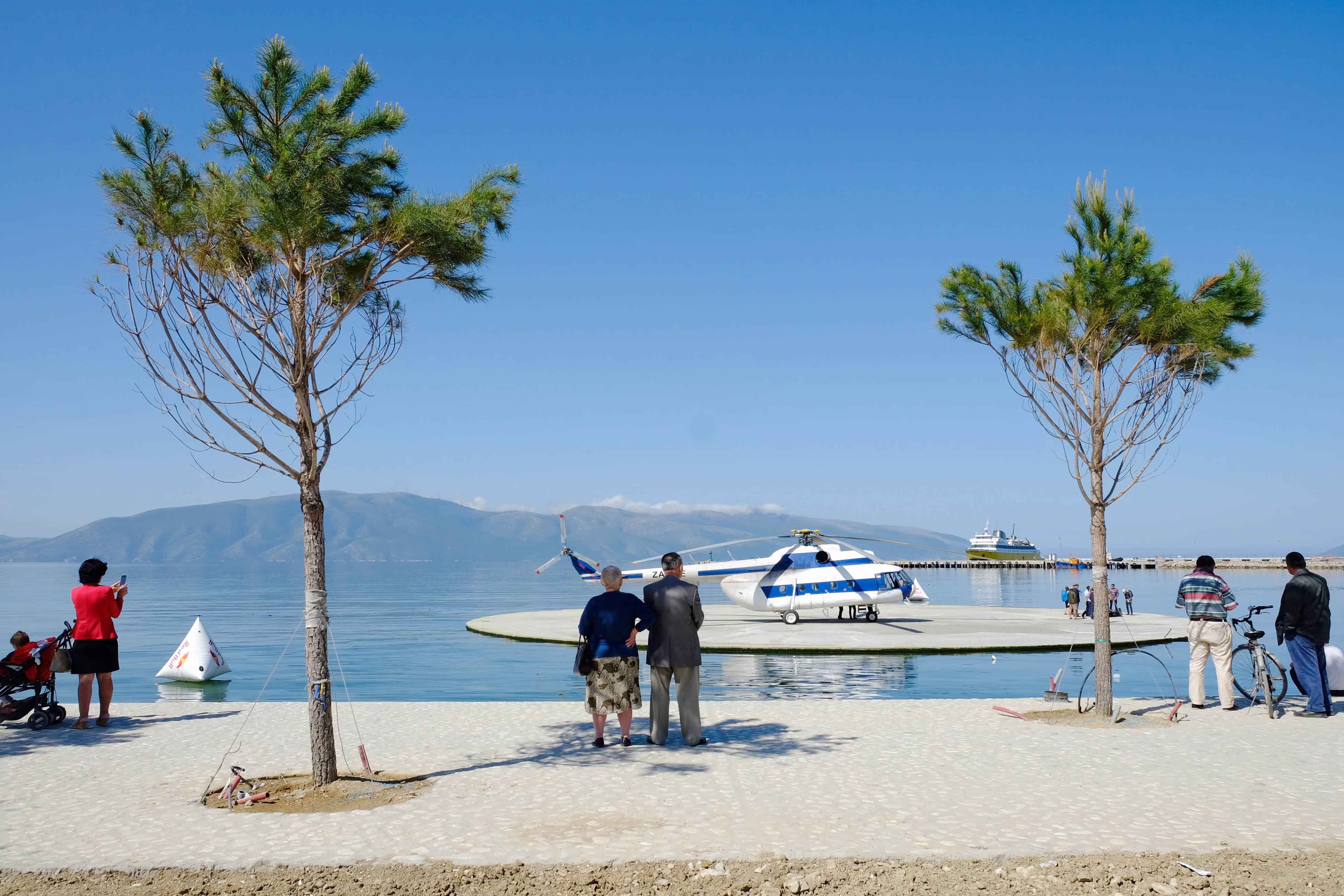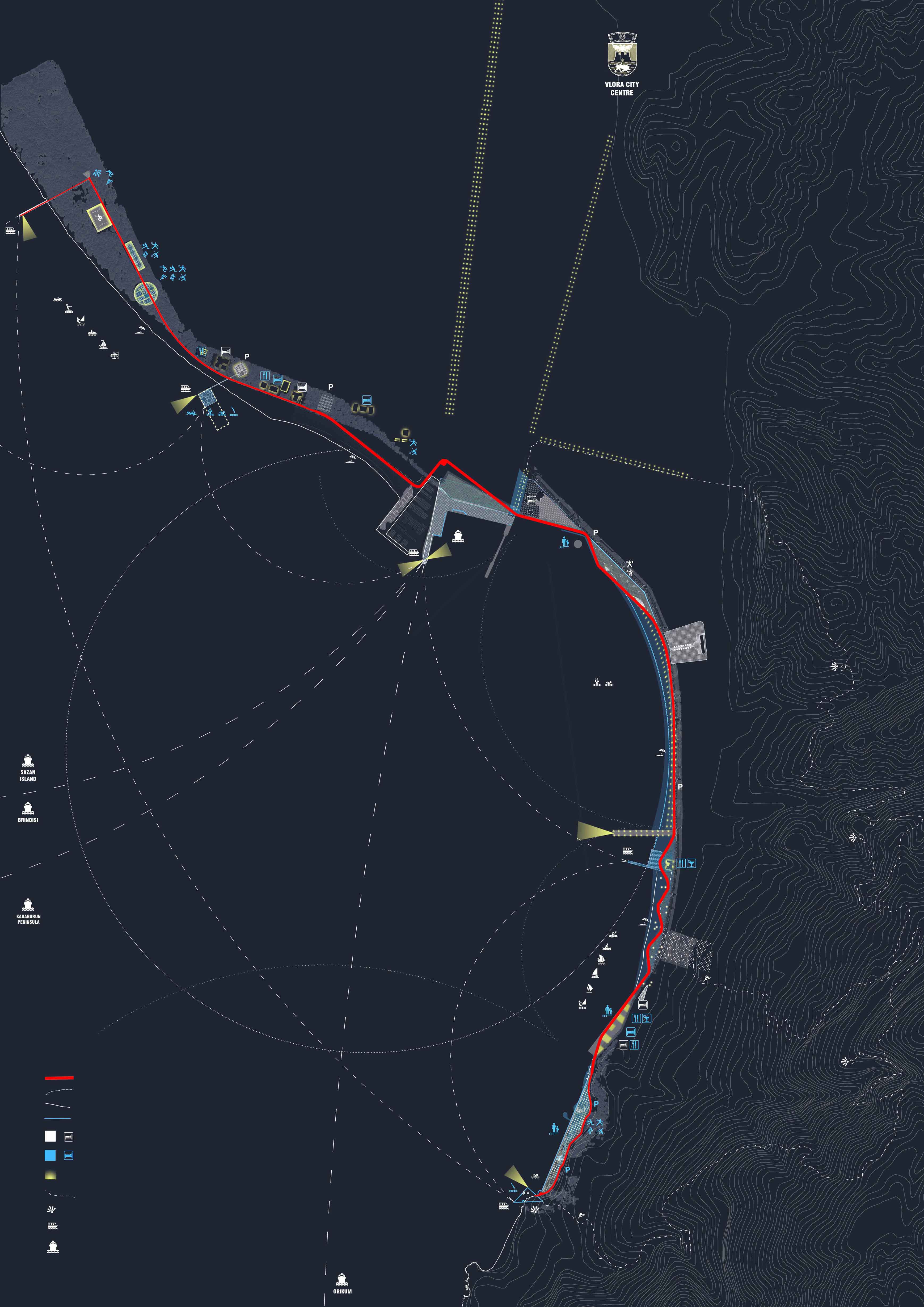Previous state
“The beauty is there and only needs to be shown.” Vlora and its general Albanian setting have a long, rich, and interesting history although events from more recent periods are mainly responsible for shaping much of the city’s seafront. First, interventions during the communist regime, then expanding illegal privatisation in the post-communist era and, finally, poor maintenance owing to the government’s financial constraints were responsible for letting this beautiful coastline fall into a deplorable state of neglect, a place without qualities, and one that was unsafe for seaside dwellers and users. On the eastern side, uncontrolled rubbish dumping invaded nearby land and so badly contaminated the shore that residents had to walk over rocks and garbage in order to reach the sea. Meanwhile, erosion was seriously threatening the main beach and the existing pedestrian route.
A main road separated the coastline from the sea and, for a time, there was a plan to widen the road. Chaotic, frenetic traffic impeded physical access on both sides as well as blocking the views and, as a further result, deterring people from using the beach and, indeed, the whole seafront.
Aim of the intervention
Recovery of the Vlora seashore is one of the plans for developing the Albanian coastline as a tourist attraction in keeping with a model of sustainable development. Hence, Atelier Albania, the government agency for urban and territorial development, called for entries in an international competition. The work was to be financed by the European Union and the cost of the related studies was met by the Albania development Fund (ADF). The basic guidelines for the intervention specified creating continuity along the coastline but also including distinctive spaces in accordance with the needs expressed by local governments and citizens. Observing these simple, very clear parameters, the winning project was designed around a continuous white concrete seafront promenade extending along five kilometres of the coast. The whole route was to be planted with a local species, namely the well-known Aleppo pine which, with minimum effort, would offer an enhanced spatial quality to the seafront in an operation also aiming to extend nearby woods towards the coast in order to create a harmonious whole giving a sense of homogeneity. The promenade and the line of trees function as connecting elements that are able to embrace areas of different characteristics, for example beaches, sports zones, and other public spaces like parks and squares.
One requisite of the recovery of the seafront was improving the city’s relationship with the sea. The width of the road had to be reduced and many more pedestrian crossings introduced so that people could move more easily between the promenade and the city’s coastal bars and restaurants, public gardens, beaches, and the large square by the sea. In general terms, the seashore had to be organised and, to the extent that it was possible, safe access to the sea and different ways of reaching it also had to be created.
Description
The white concrete promenade with its particular light and its circular reserves for trees is the main element assuring the project’s feeling of continuity. This slender strip highlights several different atmospheres dotted along the waterfront. Coming from the north, the first element is a large square now functioning as a new public space for the Vlora seafront. Paved in concrete with randomly scattered granite tiles, it is big enough to be a venue for open-air cinema, markets, and other activities. Very near the square, there is an island amphitheatre in the form of a circle floating on the sea and appearing and disappearing with tides and waves. Steps installed along the length of the square and the adjoining park offer direct access to the sea and a lookout for enjoying the view. Occupying the place of some old gardens, the park is a large green area with a network of paths in a rhomboid pattern, running along the coast with alternating shady and sunny areas, a children’s playground, and picnic and barbecue areas. The park leads to Vlora’s main beach, a favourite area for sunbathing. By contrast, the beach extending southwards is a more natural, wild strip owing to the now-sinuous treatment given to the promenade, which loses its rectilinear form as it starts delimiting a series of areas of pine plantations which now enter the space of the beach at different points.
At the end of the promenade, the demolition of a number of hotels has made it possible to introduce seaside sports fields in bright colours. It is in this part of the route, offering the best views of the Vlora coastline, where the last public space of the project is to be found. This is a travertine surface jutting out into the sea, to be used for fishing, other sports, and relaxing.
Assessment
The intervention carried out so far corresponds to the first phase of the project in which five kilometres of coastline have been recovered. Besides the renovation of the beaches and extension of trees in the autochthonous woods growing along the waterfront, the result obtained can be gauged by the harmony of the whole, which has preserved the typical identity of Albania’s Mediterranean landscape.
The project has completely transformed the appearance of Vlora and accentuates the diversity of elements comprising the city’s waterfront. This view was shared by the authors of the project, the mayor, and the citizens as the project neared completion. From the very beginning of the construction work, its transformative energy was evident and, while the project is simple in its materialisation and geometry, its impact is powerful. For example, acquisition and use of bicycles has risen sharply and so, too, has use of public transport. Moreover, the value of waterfront properties has risen, which means more income for the municipality in the form of parking rates and concessions for bar terraces and beaches. In good weather, the citizens of Vlora crowd the promenade and a wide range of events and activities have begun to fill its more singular spaces.
Now, the still-pending challenge is to tackle the second phase of the project, namely transforming the port into a space that is open to the public. The design that is to be implemented, flexible and open to interpretations, aims to be an instrument and a model for other places along Albania’s coastline.
Teresa Navas
[Last update: 05/09/2024]


